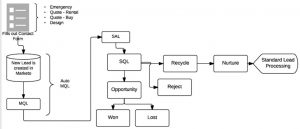Are We Blindly Following Data?
Who do we develop ads for?” This question has become more relevant in recent years as marketers grow and expand upon their data capabilities. From chatbots and AI, to natural language processing and sentiment analysis, to forecasts and other statistical models, all of these techniques rely on data. But should we, as a creative industry, always follow data blindly?
Misunderstanding Data
In 2019, according to eMarketer, 15-second videos comprised 57% of all digital ad performance worldwide, followed by 30-second videos at 28%. This data suggests that we as marketers should be creating content that is 15 seconds or less versus longer videos. By comparison, digital videos that were longer than 75 seconds (75, 90, and >90) comprised 0% of worldwide metrics.
Based on this information, a logical conclusion would be that some of the most impactful videos from the past few years would be 15 seconds. Why else are so many advertisers relying on them? However, how many 15-second videos have had a nation- (or global-) wide impact?
But what about the Colin Kaepernick video created by Nike that ran for two minutes and twenty-two seconds? This long-form video would not be recommended and yet went viral, garnering over hundreds of thousands of views. So why, when the data suggested otherwise, how did this succeed?
Harmonizing Data & Creative
This is the crux of the problem when it comes to relying on data. Data tells us averages. It tells us most likely events — even in multiple linear regressions, we can only reject the null hypothesis and not prove a statistical relationship.
Data’s power lies in optimization. If we develop ads for the data, then we will see an influx of similar content trying to capitalize on a small slice of the market.
However, in advertising and marketing, the truly effective ads and movements aren’t just created by optimizations. They are created by venturing where no creative has gone before. By taking a bold risk, Nike was rewarded with publicity for weeks, versus another flash in the pan.
Advertising at its core is a creative industry. The creative is what moves us, inspires us, and drives us. It should be at the forefront of our strategies.
Data, on the other hand, should help guide where we place the creative, the frequency of it, what demographics need to see it, and more.
In other words, creative shouldn’t conform to data; data should be used to optimize creative. Because at the end of the day, an ad is only as good as the story it tells and the people it connects with.
MediaPost.com: Search & Performance Marketing Daily(50)





